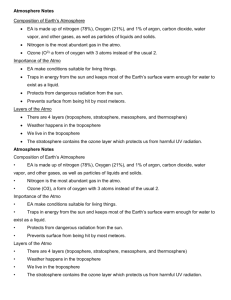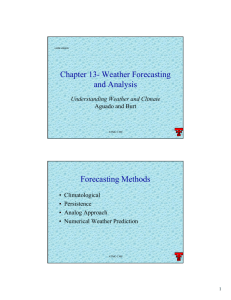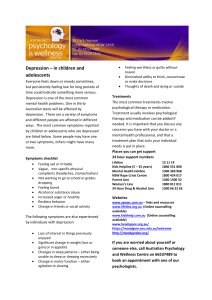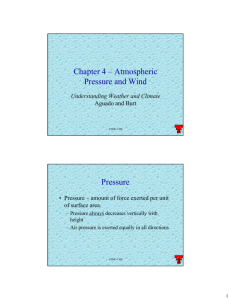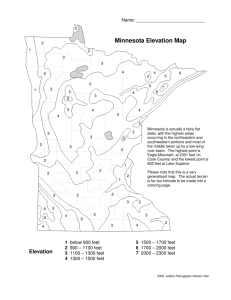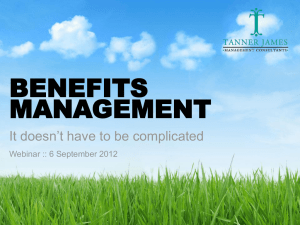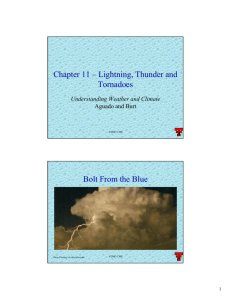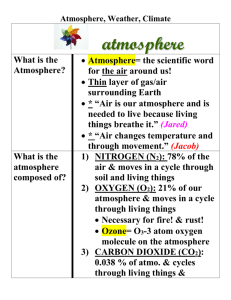Chapter 8 – Atmospheric Circulation and Pressure Distribution
advertisement
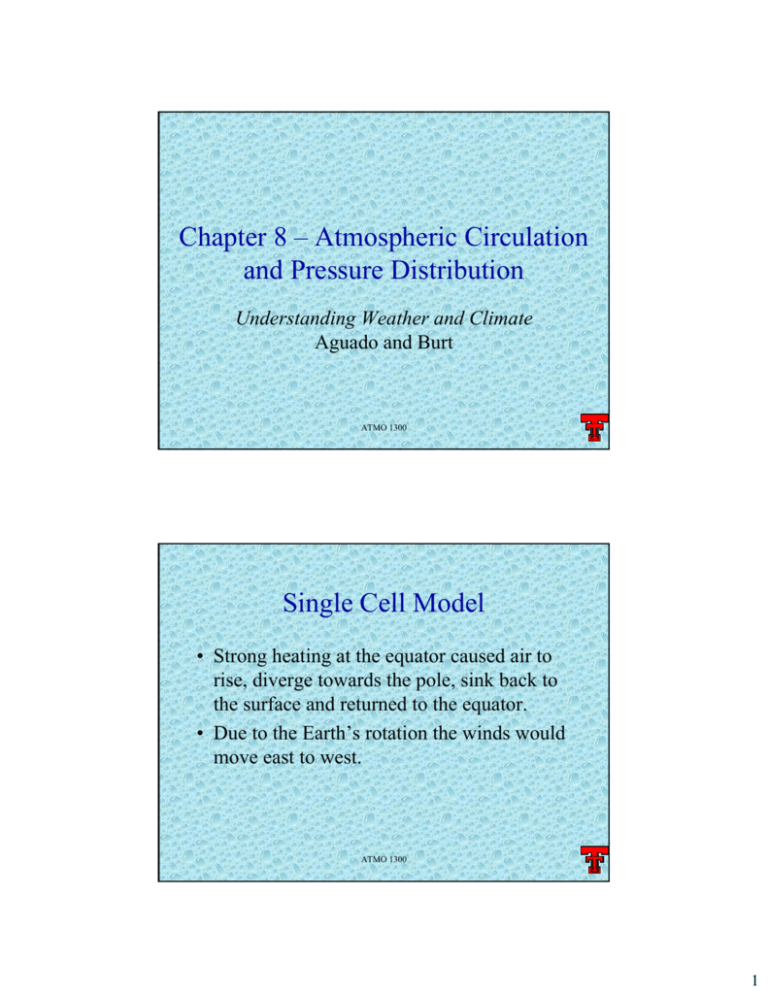
Chapter 8 – Atmospheric Circulation and Pressure Distribution Understanding Weather and Climate Aguado and Burt ATMO 1300 Single Cell Model • Strong heating at the equator caused air to rise, diverge towards the pole, sink back to the surface and returned to the equator. • Due to the Earth’s rotation the winds would move east to west. ATMO 1300 1 Single Cell Model ATMO 1300 Three Cell Model • Divides the circulations in each hemisphere into three cells: – Hadley Cell (tropics/subtropics) – Ferrel Cell (middle latitudes) – Polar Cell ATMO 1300 2 Three Cell Model Polar Cell Ferrel Cell Hadley Cell ATMO 1300 Hadley Cell • Strong solar heating leads to rising air which diverges towards the poles. – Creates Intertropical Convergence Zone (ITCZ) • Aloft, air moves poleward but acquires a west to east motion. • Air descends at 20°-30° latitude to form subtropical highs. – Creates desert conditions • Air moves towards the equator at the surface and a weak Coriolis force creates the NE trade winds. ATMO 1300 3 Ferrel Cell • Indirectly caused by the turning of the Hadley and Polar cells. • Air flows north away from the subtropical high towards the subpolar lows, and acquires a large westerly component – westerlies ATMO 1300 Polar Cell • Surface air moves from polar highs to subpolar lows. – Subpolar lows are relatively warm – Polar highs are relatively cold • Coriolis forces directs the surface winds to the west creating the polar easterlies. ATMO 1300 4 Semi-Permanent Pressure Cells • Areas of high/low pressure that undergo seasonal changes in position and strength. ATMO 1300 Semi-Permanent Pressure Cells • January ATMO 1300 5 Semi-Permanent Pressure Cells • July ATMO 1300 Semi-Permanent Pressure Cells ATMO 1300 6 Winds in the Upper Troposphere • Winds increase with height – Friction is reduced or eliminated – Pressure gradient force is increased with height • Strongest in the winter • Winds move west to east (parallel to height contours) ATMO 1300 Winds in the Upper Troposphere ATMO 1300 7 Polar Front / Jet Stream • Narrow, strongly sloping boundaries between warm and cold air (polar front) • Leads to strong temperature gradients, pressure gradient forces, and the formation of the polar jet stream. ATMO 1300 Polar Front / Jet Stream ATMO 1300 8 Troughs and Ridges ATMO 1300 Troughs and Ridges ATMO 1300 9 Rossby Waves • Longest waves • Typically 3-7 Rossby waves circling the globe • Longer wavelengths, stronger winds, and fewer in number in the winter • Migration speed affected by: – Wind speed and wavelength – Transport warm air poleward and cold air towards the equator. • Lead to divergence and convergence aloft ATMO 1300 Scaling the Atmosphere • • • • Global Scale Synoptic Scale Mesoscale Microscale ATMO 1300 10 Major Wind Systems • • • • • Monsoons Foehn, Chinook, Santa Ana Winds Katabatic Winds Sea and Land Breeze Valley and Mountain Breeze ATMO 1300 Sea and Land Breeze ATMO 1300 11 Valley and Mountain Breeze ATMO 1300 Air-Sea Interaction • El Nino / La Nina – Closely related to ENSO events – Provides warmer / cooler waters in the eastern Pacific off the coast of Peru – General 2-5 year cycle – Created by strengthening / relaxation of the easterly trade winds ATMO 1300 12
